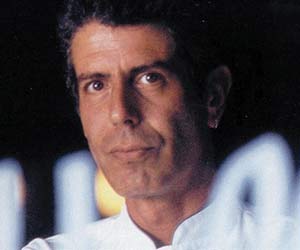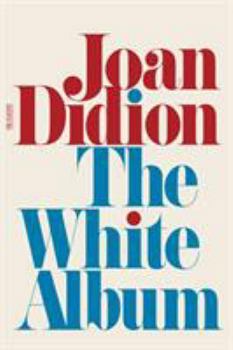The White Album
Select Format
Select Condition 
Book Overview
First published in 1979, Joan Didion's The White Album records indelibly the upheavals and aftermaths of the 1960s.
Format:Paperback
Language:English
ISBN:0374532079
ISBN13:9780374532079
Release Date:November 2009
Publisher:Farrar, Straus and Giroux
Length:224 Pages
Weight:0.50 lbs.
Dimensions:0.6" x 5.4" x 8.2"
Customer Reviews
5 ratings
In Ghostlier Demarcations Keener Sounds
Published by Thriftbooks.com User , 15 years ago
The traditional essayist is a sense-maker and an imposer of order, and in order to make sense and impose order traditional essayists assume an authorial command over their material (which is often their own lives, and/or their own historical period). But the really good essayists do not present themselves as authority figures who have the power to make sense of themselves and/or of the historical period they are living through. The good ones know that ages do not have names and that people remain mysterious, even to themselves. Though there have been other essayist that share Didion's disdain for simplistic narrative, she really does not belong to any tradition of American essayists. But she's not a champion of the avant-garde either (not in the way Sontag was). I would say that her temperament is conservative (she wants things to make sense, to cohere) but never governed by or determined by any ideological preconceptions of how things should be or how we would like them to be. Her narrative style acknowledges and accomodates complexity and combats simplicity as well as undermines our desire to fully comprehend. Her work presents a challenge to what we know as well as our ways of knowing. Therefore reading Didion is unsettling, discomfitting. The essays succeed precisely because she does not try to name the thing that she writes about with nice clarifying titles or topic sentences, rather she presents her own competing impressions and competing ideas about the unnamable something that has her interest. What has her interest in THE WHITE ALBUM are the 1960's and early 70's and here she is very good at conveying her own singular impressions of that particularly chaotic time, or, more accurately, her own motions of thought and cognitive insecurities during that moment in time when no event or person encountered seemed to be operating according to rational or knowable laws. She is in many ways our poet of the irrational. Instead of presenting her observations in neat linear patterns that follow a single structuring logos, she presents them as the myriad fragmented interventions that they are. She leaves the sense-making, the imposition of order, to others.
Brutal, honest, and real
Published by Thriftbooks.com User , 17 years ago
Didion's genius, in the book and a half of hers that I've read, is to waste not a single word on her evisceration of the culture she saw around her. But "evisceration" isn't the right word, and her essays thus far haven't really been about the culture around her. She sees a United States that is unintentionally ironic at every turn, and that has fallen apart in ways that ultimately crawl under all of our skins and drive us insane. The idealism of the Sixties turned into the madness of the late Sixties, and Didion was right there to watch the results unfold. She stands back and documents it with a few quick flicks of the paintbrush: just enough of an outline to make you understand the horror of what she sees, and then she moves on. The essays are structured, I think intentionally, with the quick cuts of modern movies. The images together don't make sense -- didn't in Slouching Towards Bethlehem, and certainly don't in The White Album. The title essay in the latter is about a period in her life (probably right around the time she was writing Bethlehem) when the stories that we use to explain our world stopped making sense, and her life crumbled as a result. Her prose perfectly captures what I take to be the tone of her mind. She's too smart to accept easy answers. Every time someone makes an argument -- even implicitly -- Didion is there with the knife to hack away the dross. I bet conversations with her are spectacular: challenging, thought-provoking, and energizing.
An astonishing collection
Published by Thriftbooks.com User , 17 years ago
The praise gets heaped on Slouching Towards Bethlehem (as well it should), but after finishing The White Album, there is no doubt in my mind they are equals in every way - an eloquent, painstaking, timeless collection of one unexpected, evocative observation after another. The appeal of Didion's writing is often to glimpse the author underneath her thick and specific veils of details, to marvel at the way her specifics are often more telling about her than about what she's writing - her own sense of dislocation amidst the silly late-60's music industry, her heartbreak within a charred orchid greenhouse, her rather endless defensiveness of California in Hollywood board rooms and Beverly Hills restaurants. In that, my favorite piece in this flawless collection is the 3-page description of Georgia O'Keefe: "'The men' believed it impossible to paint New York, so Georgia O'Keefe painted New York. 'The men' didn't think much of her bright color, so she made it brighter. The men yearned toward Europe so she went to Texas." It's a proud and bold description of a proud and bold woman, but what it really is is a treatise on what it means to be inspired and emboldened by the work and life of someone who came before you. A similar piece could be written on the uncompromising career of Didion, and it could be written following any essay in The White Album.
A great follow-up to her earlier work
Published by Thriftbooks.com User , 22 years ago
This book is definitely the "Part 2" of a series that begoins with Didion's "Slouching Towards Bethlehem" and each time that i return to it I feel like I am sitting down with a dear friend that I haven't talked to in a while. Other reviewers seem to have covered the title piece quite well, but I am intrigued that nobody seems to have mentioned my favorite -"Holy Water"- a fascinating look behind the scenes at the California Water Authority. I assign this essay again and again to my environmentalist students, both for the immediate content and for the intriguing window into the seductive nature of technology -one feels that Didion comes to be horrified and walks away enthralled. You will be too.
A Guide Through the Sixties
Published by Thriftbooks.com User , 25 years ago
Didion is a master of prose and arresting journalism. Like Norman Mailer's Armies of the Night, she places herself within the action, identifying her place in historical events. She recounts the 60s, and its epicenter, California (especially Los Angeles), with precise lucidity--Didion was there, and DOES remember the 60s. Some of the most intruiging essays are those that serve as memoirs for her time and place--waiting with the Doors for Jim Morrison to show up for a recording session, travelling through Bogota, exploring California's water systems. Required reading for Angelenos.
The White Album Mentions in Our Blog

Portrait of a Culinary Rock Star
Published by Ashly Moore Sheldon • June 25, 2020
Today, Anthony Bourdain would have turned 64. Two years ago, the celebrity chef and author shocked many when he took his own life while on location in France shooting his TV show Parts Unknown. Here we remember the famously insurgent character who did everything on his own terms.





